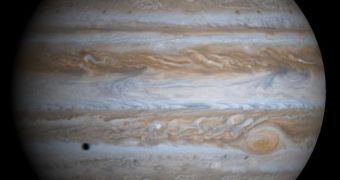In a presentation held on Thursday, January 9, at the 223rd annual meeting of the American Astronomical Society (AAS), in Washington DC, experts from the San Francisco State University (SFSU) announced the discovery of a new Jupiter-class extrasolar planet in the nearby Pisces Constellation.
The exoplanet was discovered orbiting a star called HD 4230, which lies near the core of Pisces, some 30 million light-years away. According to early results, the object is about twice the mass of Jupiter, and may contribute to deepening our understanding of how planetary formation processes work.
Thus far, astronomers were able to detect 13 exoplanets of interest in the Pisces Constellation, which lies between Aquarius to the west and Aries to the east. It contains 18 main stars, which are celestial fireballs so bright that they can be seen without telescopes. Roughly 10,000 of them are visible from Earth.
The astronomy group that discovered the exoplanet HD 4230b was led by SFSU assistant professor of physics and astronomy Stephen Kane. The study centered on the HD 4230 system and on three other nearby stars, all in single systems, and all containing exoplanets.
Analysis of these objects was carried out using the Gemini North Observatory in Hawaii, via an imaging method called radial velocity. “There is a great interest in these stars that are known to host” planets,” Kane said at the meeting yesterday.
He added that the radial velocity technique was used because it allows for the direct identification of exoplanets through analyzing wobbles in their parent stars' trajectories. No matter how large, stars are always thrown a little off-balance by planets in their orbit, even more so when such worlds are massive.
However, the results that the team obtained with this method were mixed, in the sense that some portions of the data did not reflect clearly the presence of a planet. In other words, it is entirely possible that one or all of the four stars analyzed in this study are accompanied by other types of objects.
Kane said that the team also tested a hypothesis where darker stars were orbiting the study targets in eccentric orbits. “I thought we were likely to find stellar companions, and when all four didn’t have a binary star, that did surprise me,” he explained.
It was during these checks that HD 4230b was found orbiting its parent star, HD 4230. The team confirmed its discovery by using data from the W. M. Keck Observatory, in Hawaii. Additional details of the investigation will appear in an upcoming print issue of the esteemed Astrophysical Journal.

 14 DAY TRIAL //
14 DAY TRIAL //